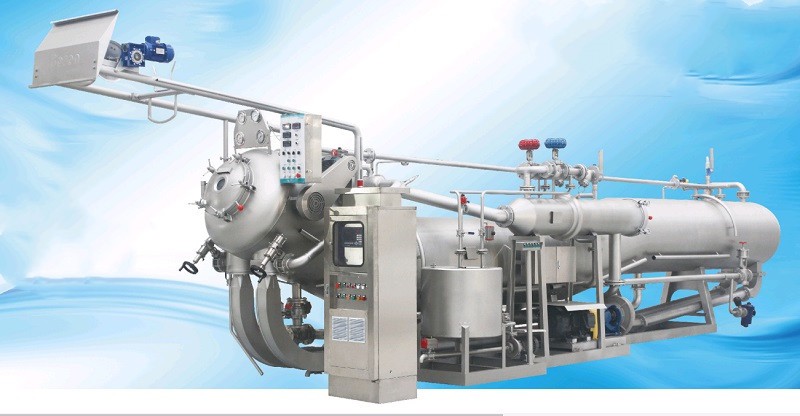How to store a textile dyeing machine during the off - season?
Oct 02, 2025
Hey there! As a supplier of textile dyeing machines, I know how important it is to properly store these machines during the off - season. A well - stored machine not only extends its lifespan but also ensures it's in top - notch condition when the busy season rolls around again. So, let's dive into some tips on how to store a textile dyeing machine during the off - season.
1. Clean the Machine Thoroughly
First things first, you gotta give your textile dyeing machine a good cleaning. Dye residues, lint, and other contaminants can build up over time, and if left unattended, they can cause corrosion and mechanical problems.
Start by draining all the dye and water from the machine. Use a mild detergent and warm water to clean the interior of the dyeing vessel. Make sure to scrub all the nooks and crannies to remove any stubborn stains. For the exterior, wipe it down with a clean cloth to get rid of dust and dirt.
Don't forget about the pipes and valves. Flush them with clean water to clear out any blockages. You can also use a pipe - cleaning solution if necessary. This step is crucial as clogged pipes can lead to poor circulation and uneven dyeing when you start using the machine again.
2. Lubricate Moving Parts
The moving parts of your textile dyeing machine, such as motors, bearings, and gears, need proper lubrication. Over time, the existing lubricant can dry out or become contaminated, which can increase friction and wear on these parts.
Before storing the machine, apply a high - quality lubricant to all the moving parts according to the manufacturer's instructions. This will help prevent rust and corrosion and keep the parts working smoothly. Make sure to use the right type of lubricant for each part. For example, some parts may require a grease - based lubricant, while others need an oil - based one.
3. Protect Electrical Components
Electrical components are the heart of your textile dyeing machine, and they need special care during storage. Moisture is the enemy of electrical parts as it can cause short - circuits and damage the wiring.
Cover the electrical control panel with a plastic or rubber cover to keep moisture out. You can also place a desiccant pack inside the control panel to absorb any excess moisture. If possible, store the machine in a dry and well - ventilated area. Avoid storing it in basements or areas prone to flooding.
Check the electrical cords for any signs of damage. If you find any frayed or exposed wires, repair or replace them before storing the machine. This will not only protect the machine but also prevent any safety hazards.


4. Inspect and Replace Worn - Out Parts
The off - season is the perfect time to inspect your textile dyeing machine for any worn - out or damaged parts. Look for signs of wear on belts, seals, and gaskets. These parts can degrade over time and may need to be replaced to ensure the machine operates efficiently.
If you notice any parts that are close to the end of their lifespan, it's a good idea to replace them before storing the machine. This way, you won't have to deal with unexpected breakdowns when you start using the machine again. You can find replacement parts from your machine's manufacturer or a reliable supplier.
5. Store in a Suitable Location
Choosing the right storage location is key. The area should be clean, dry, and free from extreme temperatures. Avoid storing the machine in direct sunlight as it can cause the plastic and rubber parts to deteriorate.
A climate - controlled storage facility is ideal, but if that's not an option, you can use a shed or a garage. Make sure the storage area is well - ventilated to prevent the buildup of moisture. You can also use a dehumidifier to keep the humidity levels in check.
If you're storing multiple machines, leave enough space between them to allow for proper air circulation. This will help prevent the spread of any potential mold or mildew.
6. Document the Storage Process
It's a good idea to keep a record of the storage process. Note down the date when you cleaned, lubricated, and inspected the machine. Also, make a list of any parts that were replaced. This documentation will come in handy when you're ready to start using the machine again.
You can use a simple spreadsheet or a notebook to keep track of this information. Having a detailed record will help you identify any issues that may have occurred during storage and ensure that you've followed all the necessary steps to maintain the machine.
Our Textile Dyeing Machines
We offer a wide range of high - quality textile dyeing machines, including the GYS-L-F Serial Liquid Flow &jet HT Dyeing Machine, the GYX-F Soft Flow &jet Flow High Temperature Dyeing Machine, and the Soft Over Flow Dyeing Machine. These machines are designed to provide efficient and uniform dyeing results, and with proper storage during the off - season, they'll serve you well for years to come.
If you're in the market for a new textile dyeing machine or need advice on storing your existing one, don't hesitate to reach out. We're here to help you make the most of your textile dyeing operations. Whether you're a small - scale textile producer or a large - scale factory, we have the right machine for you. Contact us today to discuss your needs and explore our product range.
References
- Textile Machinery Maintenance Handbook
- Manufacturer's Manuals for Textile Dyeing Machines
- Industry Best Practices for Textile Machine Storage
